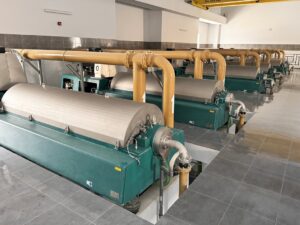Utility Power Water Treatment Market Will Exceed $23 Billion in 2012
Utility power generators will spend $23.4 billion in 2012 for equipment and chemicals to treat water. This is the conclusion reached in the continually updated, Fluid/Gas Treatment and Control: World Markets published by the McIlvaine Company.
Power plants use ten times more water than is treated in municipal drinking water plants. They extract and treat more water than all other industries combined. The only larger use of water is for irrigation. The above totals do not include industrial power plants which add another $5 billion to the total.
The main use of water by the utility power generators is for steam generation. This includes the water which is directly converted to steam and the large amount of cooling water which is also required. The biggest user is the coal-fired generation segment. They also have flyash transport and SO2 scrubbers which require additional amounts of water treatment. Nuclear power plants need the water for steam generation but also have to deal with remediation and contamination prevention.
Various renewable energy technologies also require water. Concentrated solar power uses water for steam generation. Geothermal power requires significant amounts of water. Hydropower uses water directly as an energy source. Tidal and wave energy are in the early stages of development.
Water for steam generation must be treated to a quality far beyond that of drinking water. Many filtration, ion exchange and degasification steps are utilized. The steam cycle requires large quantities of valves and pumps which must deal with very high pressures and temperatures. Sophisticated instrumentation is required.
The filtration and separation starts with the river or surface water treatment and ends with the treatment of the wastewater prior to discharge. There are chemicals required at each step along the way. Flocculants and coagulants are needed in pre-filtration. Corrosion inhibitors, oxidizers, scale inhibitors, ion exchange resins and other chemicals are needed during the many treatment steps prior to discharge.
The scrubber to remove SO2 from a 1000 MW power plant requires as much water as a 400 MGD municipal water treatment plant. This is a plant big enough to serve a city of four million people. Recent regulations, which are targeting the so called thermal pollution, will require many utilities in the U.S. to install recycling systems to cool the steam condensate. Other clean water regulations will require expenditures to renovate existing ash ponds.
Large numbers of coal-fired power plants are being built in Asia. There are some very large hydropower projects in the region as well. Consequently, Asia is the largest market presently and will be the fastest growth market over the next decade.
Source: The McIlvaine Company







